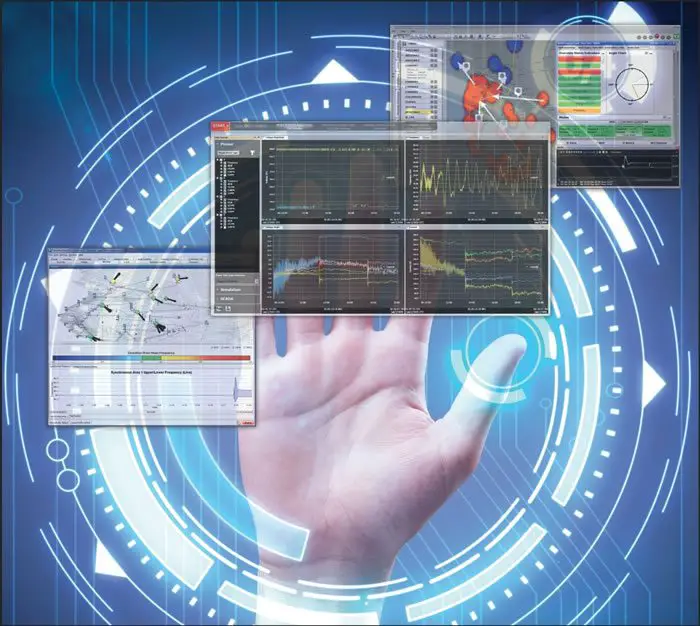Alstom Grid, along with other solution providers, have partnered with Pacific Gas & Electric
Company (PG&E) to continue collaboration into Phase II of PG&E’s synchrophasor project,
Synchrophasor Technology Realization.
This collaboration, partially funded by US Department of Energy (US DOE), aims to advance situational awareness enhanced with stability monitoring, a key step towards proactive grid stability management as data quality is improved and systemwide reliability indicators are strengthened. As such, systems can be restored faster and postevent
analysis is improved.
In 2013, Alstom Grid collaborated with PG&E project team to deliver enhanced e-terra integrated real-time synchrophasor and Energy Management Systems (EMS) applications for Phase I, Production Grade Synchrophasor Project. This enables PG&E to monitor power system behavior from a new class of GPS time-synchronized, high resolution Phasor Measurement Units (PMUs).
These devices take grid measurements up to 120 times per second versus the traditional four to six second data rate generated by unsynchronized SCADA sensors used over the past several decades. The increased visibility allows PG&E to identify and analyze system vulnerabilities in real-time, assess available transfer margins across transmission corridors and provide corrective actions to prevent potential blackouts.
Phase II will roll out Alstom’s Grid Stability Package, recently released at CIGRE 2014, the biennial worldwide forum of the electrical power industry in France. This solution will help realize investments and the full aim of this project – integrate existing measurement-based PMU analytics, model-based EMS and dynamic stability analytics from Phase I to enable proactive management of grid stability.
The project includes:
• Improvement of synchrophasor data quality validation by combining Linear State Estimation driven purely by PMU data with conventional state estimation from the EMS
• Enhancement of existing PMU-based post-event analysis application with SCADA data and other simulation tools for dynamic model evaluation
• Combining PMU and EMS data to quickly detect and manage islanding conditions for improved resynchronization process and overall restoration time reduction
• Fine-tune real-time voltage instability indication application, and provide unified view of voltage stability monitoring across PMU and EMS applications
• Providing an integrated synchrophasor and EMS training environment for PG&E staff to create “what-if” scenarios for preparation purposes.
Alstom’s solution will provide a more holistic and accurate view of current grid status, better intelligence to understand, predict and mitigate potential developing events, and unmatched historical data quality for better post-event analysis and power system control.
“The smart grid technologies are here, the challenges are manageable and the benefits far outweigh the costs. To modernize legacy grid systems is a delicate balance of maintaining status quo while incorporating rapidly evolving technology, and managing security concerns and other core standards, all within the current economic climate,” said Vahid Madani, Wide-Area Warning and System Integrity Protection Schemes Technology Lead, Pacific Gas & Electric PG&E.
“A crucial success factor in advanced technology deployment for mission critical functions is confidence in use of the tools. Through partnership with Alstom Grid and others, industry visions have become reality. For PG&E, objectives of our Phase I Synchrophasor Project have been accomplished with confident, trained end users at our utility.”
“Based on our experience with PG&E and other like-minded progressive utilities around the world, we believe the next generation EMS is headed toward a hybrid measurement- and modelbased proactive grid management approach. To this end, we have packaged existing technology in such a way to address this emerging trend.” said Karim El Naggar, Vice President Alstom
Grid’s Network Management Solutions.
Alstom is a global leader in the world of power generation, power transmission and rail infrastructure and sets the benchmark for innovative and environmentally friendly technologies. Alstom builds the fastest train and the highest capacity automated metro in the world, provides turnkey integrated power plant solutions and associated services for a wide variety of energy sources, including hydro, nuclear, gas, coal and wind, and it offers a wide range of solutions for power transmission, with a focus on smart grids.
Alstom Grid has one clear vision: to develop innovative solutions for a flexible, reliable, affordable and sustainable electrical grid, everywhere. We design, manufacture, install and service the power transmission and distribution products and systems that empower the planet’s low carbon economy… for now and for the future.
